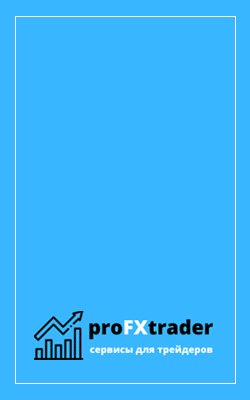In-Depth Guide to Trading Stocks Based on Volume and Volume Analysis
.jpeg)
Traders usually have their own definitions of good trading volume. It’s best to do your research to determine your preferred volume or consult a trading or investing professional. MarketBeat offers several tools to help investors use metrics like volume and momentum to find profit opportunities. Click here to check out our Ultimate Investment Research Toolkit, which is discounted for a limited time only.
Traders and Volume of Trade
.jpeg)
When there are rising prices and falling volume, the uptrend may be weakening. Fewer and fewer traders are participating in the move, and there may be a lack of conviction behind the rally. This diminishing demand raises the risk of a potential reversal, as the price increase may not be supported by enough traders in the market. This is common near the end of bullish trends or during consolidation periods, where prices drift higher on light volume. For everyday investors, understanding volume helps put price movements in context.
If the closing price is closer to the high, it indicates accumulation or buying pressure. On the other hand, if the closing price is closer to the low, it signifies selling pressure. When the OBV line is rising, it signifies a bullish trend, indicating strong buying pressure. Conversely, a declining OBV line suggests a bearish trend with selling pressure dominating.
You can use volume not only to confirm a trend but to assist in your trade management as well. As price stalls, buyer’s who bought the surplus of offers at $10 will begin to liquidate their positions driving prices down ending the trend. Volume increases as more market participants (buyers and sellers) enter the market. For example, if you buy 100 shares of TSLA from a seller, the total volume for that transaction is 100. Click the link below and we’ll send you MarketBeat’s list of seven stocks and why their long-term outlooks are very promising.
How Much is 1 Volume in Stocks?
Volume tends to be highest near the market open and close and the start of the week and last day of the week. This example was for illustrative purposes only and is not a recommendation to buy or sell GE stock. Also, the criteria for trading limits as well as ADTV are purely for illustration.
What Are Some Popular Volume Indicators?
For instance, if you observe a currency pair’s price moving through a series of small incremental changes, each of those price changes contributes to the tick volume. This mechanism enables traders to gauge the intensity of trading activity within the forex market. High trading volume means that buying pressure is increasing and vice versa. However, it does not necessarily mean that you should not trade when there’s low trading volume in the market. In fact, some traders prefer markets with low trading volume as these are less volatile and, therefore, less predictable. In trading, volume is a key indicator of how liquid and active the market is.
- The company has a market capitalization of $3.44 billion, a PE ratio of -6.13 and a beta of 2.29.
- Understanding tick volume is crucial for assessing the level of market participation and can aid traders in making well-informed trading decisions.
- In trading, volume is a key indicator of how liquid and active the market is.
- Whereas, a futures “contract” is a legal agreement to buy or sell a particular commodity or security at a predetermined price at a specified future date and time.
- It involves plotting the total volume of a security that has been traded at each price level, rather than simply displaying the total volume for the entire trading session.
For image manipulation example, if five transactions occurred in one day, and each transaction involved 100 shares, the trading volume for that day would be 500. Volume can gradually increase over days or weeks but sometimes spikes almost instantaneously, especially in small-cap stocks with low share counts. Sudden volume spikes in thinly traded stocks should be approached with a skeptical eye. Still, large volume increases in established or reputable companies could signal that a news event or catalyst is about to make headlines.
Conversely, a breakout accompanied by a substantial increase in trading volume is more the commitments of traders bible likely to be authentic and profitable. CMF gives traders a clear picture of the market sentiment and helps them make informed decisions based on the prevailing pressure. It is the metric that quantifies the number of units or shares of an asset that have changed hands during a specified timeframe. For a full method on how to day trading stocks, including what stocks to trade, strategies, risk management, and more, see the Price Action Stock Day Trading Course. They can often tell us when the price is nearing a reversal point. For example, there was a massive price selloff and volume is spiking to many times normal, wait for price to start rising before buying.
Average daily trading volume is an important metric because high or low trading volume attracts different types of traders and investors. Looking at volume patterns over time can help get a sense of the strength of conviction behind advances and declines in specific stocks and entire markets. The same is true for options traders, as trading volume is an indicator of an option’s Envelope indicator current interest.
Increasing Volume and Rising Prices
As mentioned prior, volume will often increase after a breakout or as the price starts moving in the trending direction again after a pullback (Chevron examples above). But once that price is moving, volume is almost always going to decline for a period of time, even as the price continues to rise. Volume shelves or volume nodes are areas on a volume-by-price chart where there is a concentration of trading volume. These areas can be identified by looking for horizontal bars or clusters of bars that represent high volumes of trades executed at specific price levels.
Вы должны быть авторизованы, чтобы оставить комментарий.



Об авторе